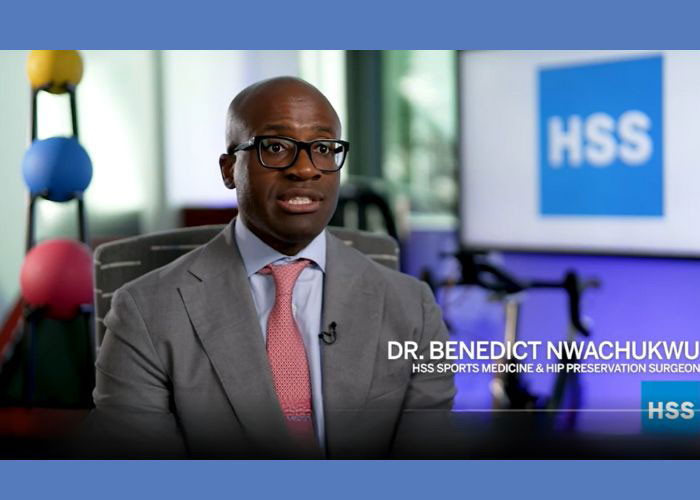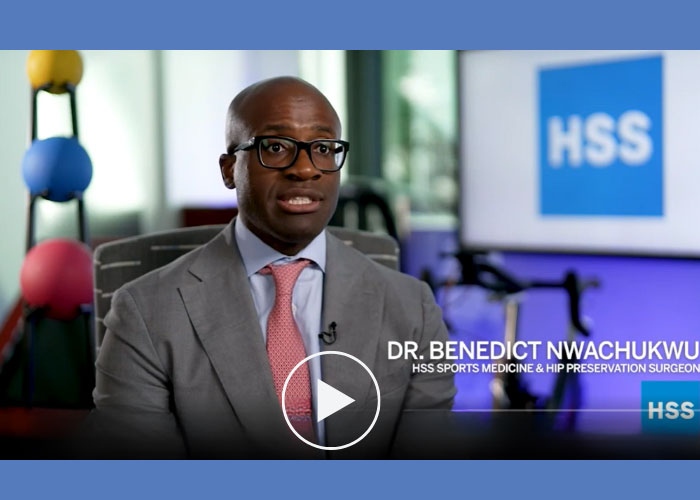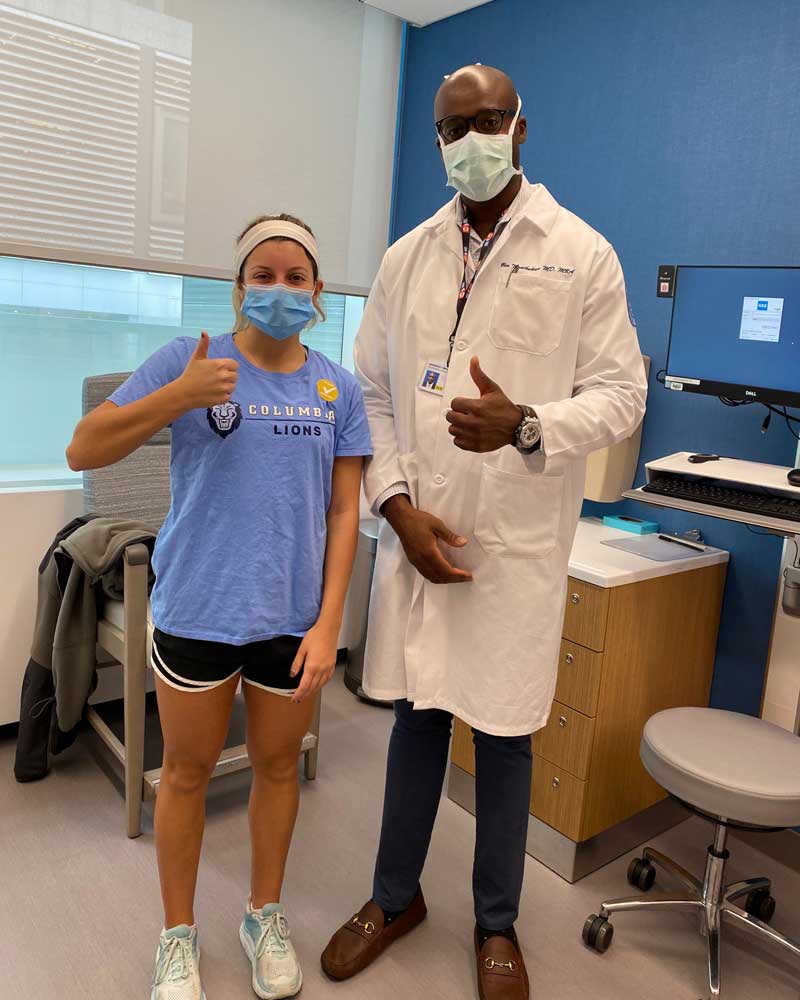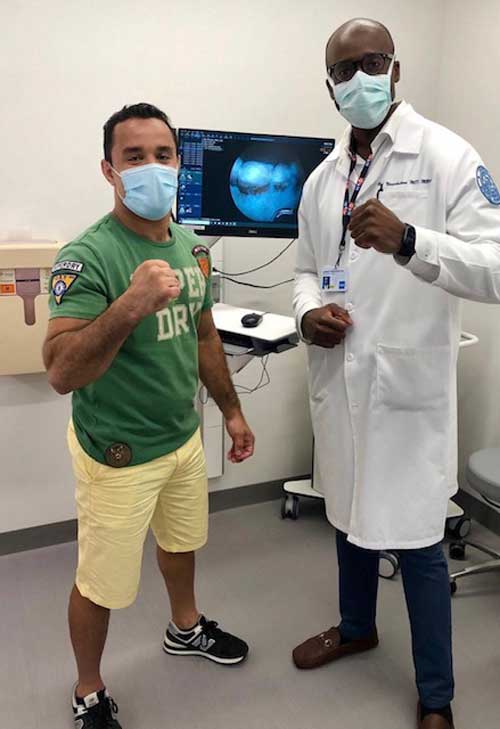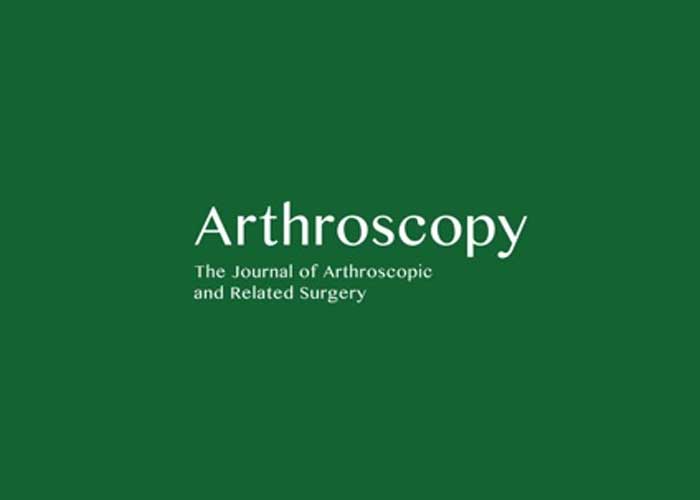FAI Hip Surgeon

Are you an athlete who participates in sports activities requiring repetitive motion of the hip? If so, you may be at risk of Femoroacetabular impingement, otherwise known as FAI. FAI is a condition marked by abnormal contact between the hip bones causing impingement and pain. Hip surgeon and FAI treatment specialist, Doctor Benedict Nwachukwu provides diagnosis as well as surgical and nonsurgical treatment options for patients in Manhattan, New York City, NY who are experiencing symptoms and pain caused by FAI. Contact Dr. Nwachukwu’s team today!
What is Hip Impingement?
The hip is a ball and socket joint where the rounded top of the femur (thigh bone) called the femoral head, fits into the hip socket, called an acetabular socket. In a healthy hip, the femoral head moves smoothly and easily within the socket. Hip impingement occurs when abnormal hip anatomy prevents the painless, smooth and free movement of the hip joint. Dr. Benedict Nwachukwu, orthopedic hip surgeon, specializes in treating hip impingement and other hip related conditions. Patients in Manhattan, New York City and the surrounding New York boroughs trust him to treat their hip impingement and he often recommends a treatment called femoroplasty to return patients to their pain-free lifestyle.
What is femoroacetbular impingement (FAI)?
FAI is a condition marked by abnormal contact between the bones that make up the hip joint. The ball (femoral head) can rub against the socket (acetabulum) and lead to degeneration within the joint. Over time, a bump forms on the edge of the femoral head, leading to cartilage grinding inside the acetabulum. Femoroacetabular impingement is commonly seen in young and middle-aged adults who are involved in repetitive sports.
What is cam impingement?
FAI has different causes, depending on the location of the impingement. Cam impingement occurs due to the femoral bump that has developed from the abnormal contact of the femoral ball inside the acetabulum. Cam impingement involves a bump on the edge of the femoral head, causing cartilage degeneration. Since the head is not round, it causes damage to the articular cartilage and the labrum. Cam impingement gets its name from the motion of a device used to manufacture engines, where the irregular-shaped wheel strikes a lever at one or more points on its circular path. This same type of “striking” happens within the hip joint with the abnormally shaped femoral head being forced into the socket where it causes damage to the cartilage, soft tissues and hip labrum.
Can cam impingement be treated without surgery?
In most cases, initial treatment of cam type impingement is non-operative, including rest, activity modification and a physical therapy program designed to strengthen the core musculature and muscles around the hip. Dr. Nwachukwu may also recommend injections into the hip for diagnostic and therapeutic purposes. If a patient continues to have ongoing hip pain, then femoroplasty surgery is usually recommended by Dr. Nwachukwu to correct the bony abnormality and address any associated labral or cartilage injuries.
What is a femoroplasty?
If non-operative cam impingement treatments do not alleviate pain, a femoroplasty may be needed. During this procedure, Dr. Nwachukwu typically uses an arthroscopic surgical approach using three small incisions. A camera is introduced into the hip to visualize the damage while the other incisions are used to insert special, tiny instruments to perform the procedure. A femoroplasty consists of removing the bony abnormality (cam lesion) on the femur and reshaping the femoral head and neck junction into a normal, round sphere.
Cases of mixed type impingement may require both a femoroplasty and an acetabuloplasty, which can be performed during the same surgery. In addition, any cartilage and labrum damage is addressed during the operation through an arthroscopic approach.
What are the risks of arthroscopic hip surgery?
During a traditional hip arthroscopy, the hip joint needs to be open in order for the instruments to safely pass into the joint. The traditional way to open the joint is to place a large padded post in the patient’s perineal area to provide counter-traction while the leg is pulled taught. Dr. Nwachukwu is one of approximately 20% of hip surgeons in the USA who have switched to postless hip arthroscopy. This new technology for accessing the joint eliminates the perineal post completely by using a special surgical table to create the traction required for the surgery resulting in quicker recovery without complications such as numbness in the genital area and possible nerve damage.
What is the recovery time following a femoroplasty?
Post-operative recovery after a surgical cam impingement treatment includes a focused physical therapy program starting immediately after surgery. This includes working on regaining motion of the hip while protecting any repairs made during femoroplasty. Patients are typically on crutches for 4 to 6 weeks depending on what type of procedure was necessary and are also placed in a brace to help protect their hip joint during healing. Femoroplasty results have been very promising with the majority of patients in New York being satisfied with the procedure, having improvements in pain and returning to their normal activities.
For more resources and information on cam impingement, FAI and how it can be treated with arthroscopic femoroplasty, please contact the office of Benedict Nwachukwu, MD, orthopedic hip surgeon serving Manhattan, New York City and surrounding New York boroughs.

